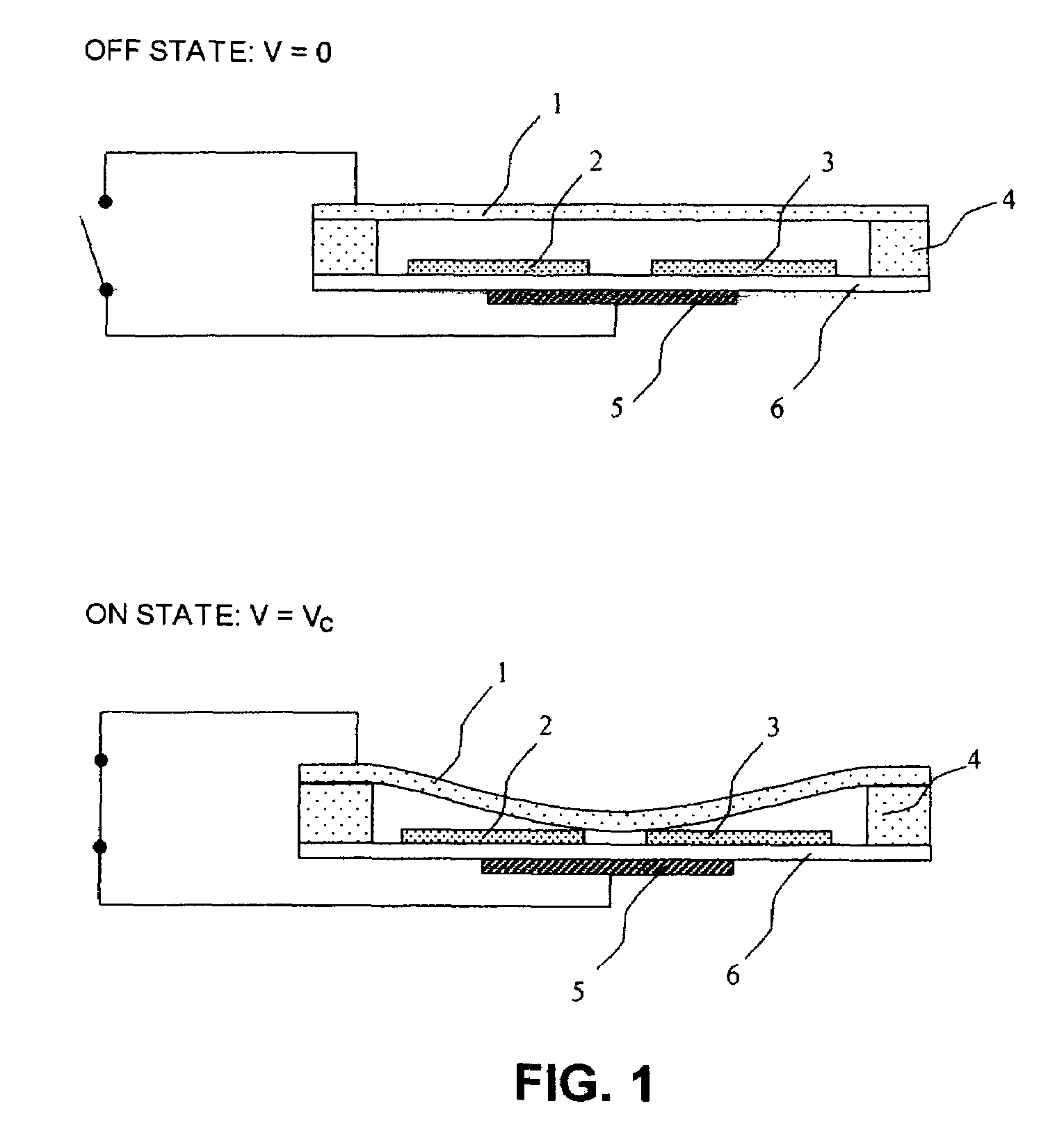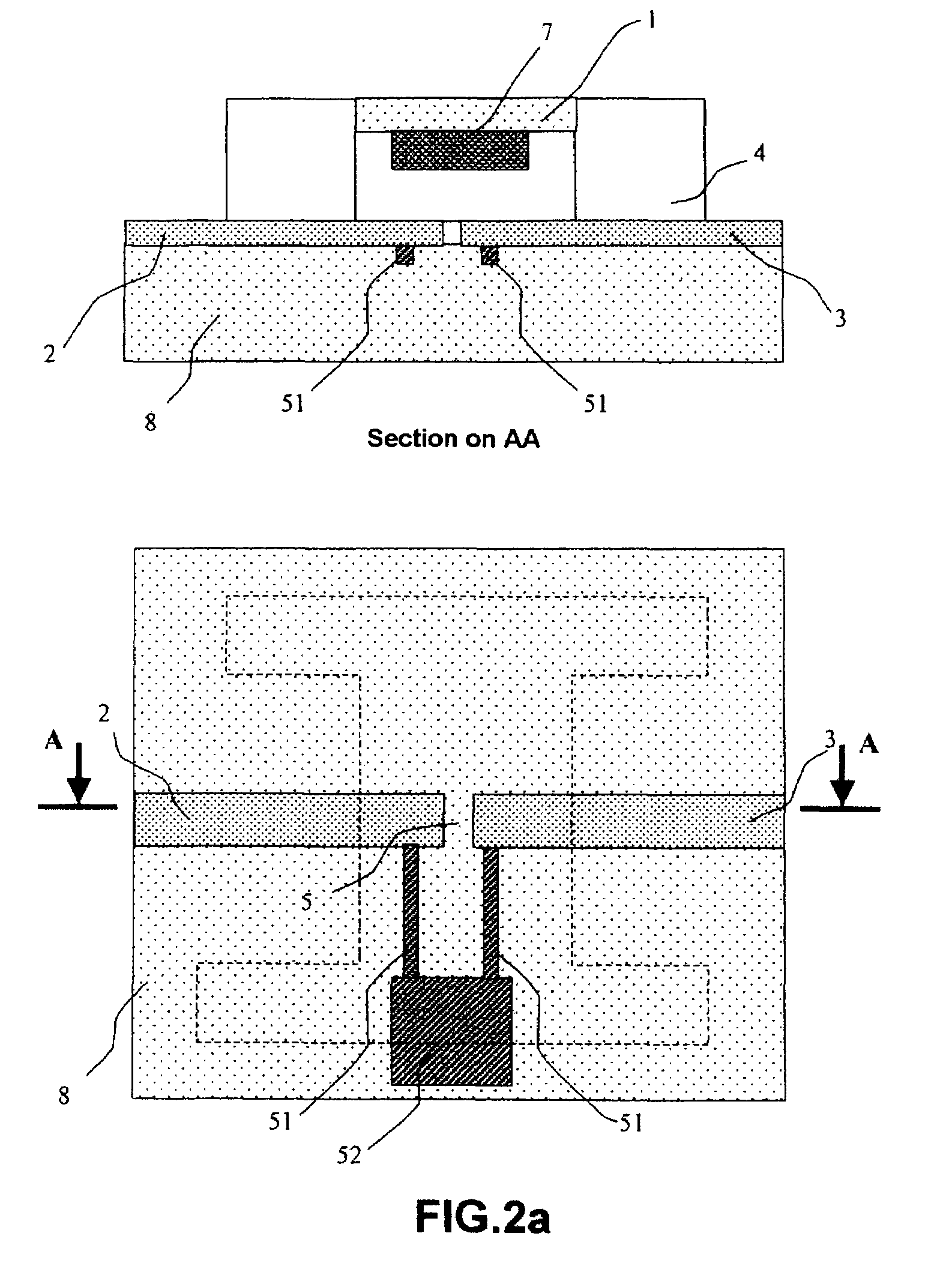Electrostatically actuated low response time power commutation micro-switches
a micro-switching and power commutation technology, applied in the field of micro-system components, can solve the problems of reducing the lifetime of the device, limiting the radiofrequency power that can pass through the membrane thus produced, and the stiffness of the membrane then requires a larger force to move. , to achieve the effect of low response tim
- Summary
- Abstract
- Description
- Claims
- Application Information
AI Technical Summary
Benefits of technology
Problems solved by technology
Method used
Image
Examples
first embodiment
[0076]FIGS. 3, 4, 5 and 6 show the various steps of the process for producing the parallel-type microswitch according to a
[0077]FIG. 3 shows a top view and two sectional views on AA and BB of the first subassembly 100 before assembly. The process for fabricating the first subassembly typically comprises the following steps:[0078]production on an insulating substrate 8, for example made of insulating silicon or glass, of regions 81 of additional thickness, called mesas, by etching said substrate;[0079]production of a layer 9 of insulating material of the silica type on the surface of the substrate 8, which includes the mesas if the substrate is not sufficiently insulating. This layer may be obtained by deposition or by surface oxidation of the substrate, especially in the case of a silicon substrate;[0080]simultaneous production of the control lines 51, the control pad 52 and the control electrode 5. This control electrode may optionally be covered by the input and output signal line...
second embodiment
[0095]FIGS. 7, 8 and 9 show the various steps of the process for producing a parallel-type microswitch in a
[0096]FIG. 7 shows a sectional view of the first subassembly 100 before assembly. The process for fabricating said first subassembly typically comprises the following steps:[0097]simultaneous production of the control line 51, the control pad 52 and the control electrode 5. This control electrode may optionally be covered by the input and output signal lines 2 and 3. The control line 51 is sufficiently resistive to prevent the propagation of the RF signal. Typically, this resistance is greater than one hundred ohms / square;[0098]deposition of a layer 6 of insulating material of the silicon nitride or silicon oxide type, covering the lines 51 and, optionally, partly the electrode 5; and[0099]simultaneous production of:[0100]two conducting lines 10 and 11 implanted on said substrate 8, these being called ground lines, which are mutually parallel and electrically connected to an el...
PUM
 Login to View More
Login to View More Abstract
Description
Claims
Application Information
 Login to View More
Login to View More - R&D
- Intellectual Property
- Life Sciences
- Materials
- Tech Scout
- Unparalleled Data Quality
- Higher Quality Content
- 60% Fewer Hallucinations
Browse by: Latest US Patents, China's latest patents, Technical Efficacy Thesaurus, Application Domain, Technology Topic, Popular Technical Reports.
© 2025 PatSnap. All rights reserved.Legal|Privacy policy|Modern Slavery Act Transparency Statement|Sitemap|About US| Contact US: help@patsnap.com



